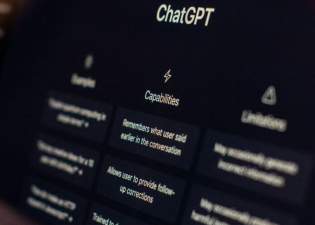With the continuous development of artificial intelligence technology, language models have become one of the core breakthroughs in the field of AI. In particular, generative language models represented by ChatGPT have attracted widespread attention worldwide with their outstanding capabilities in natural language processing (NLP). Whether it is content creation, code generation, customer service, sentiment analysis, or language translation, ChatGPT and similar technologies have begun to profoundly change our work and lifestyle.
With the continuous development of artificial intelligence technology, language models have become one of the core breakthroughs in the field of AI. In particular, generative language models represented by ChatGPT have attracted widespread attention worldwide with their outstanding capabilities in natural language processing (NLP). Whether it is content creation, code generation, customer service, sentiment analysis, or language translation, ChatGPT and similar technologies have begun to profoundly change our work and lifestyle.
However, this is just the beginning of the language model revolution. With the advancement of technology, the next generation of language models will subvert the existing industry landscape with a more shocking attitude and bring about a new AI revolution. So, how will future language models continue to promote this revolution? How will they change the world we know?

More powerful reasoning ability:
breaking through human cognitive limitations
Although current language models (such as GPT-4) have performed well in generating natural language text and processing complex queries, their reasoning ability is still limited, especially when dealing with complex logical reasoning, long-term dependencies, or multi-step problems, it is often difficult to achieve perfect results.
The next generation of language models is expected to break through these limitations, have stronger reasoning capabilities, and achieve major breakthroughs in the following aspects:
- Multi-step reasoning and abstract thinking:
Future language models may incorporate more symbolic reasoning and logical reasoning, and be able to understand complex problems and perform multi-step reasoning like humans, so as to handle more difficult tasks. For example, they may be able to effectively analyze legal documents, make more accurate financial forecasts, or conduct complex scientific experimental designs.
- Cross-domain knowledge integration:
Through more advanced cross-domain learning methods, the next generation of models will be able to integrate knowledge from different fields (such as medicine, law, physics, etc.) to make more accurate reasoning and decisions, thereby providing strong support for multidisciplinary collaboration.
Multimodal capabilities beyond language:
Eyes and ears that perceive the world
Current language models mainly take text data as input and generate text output, while future language models may have multimodal capabilities. That is, they can simultaneously process multiple data forms such as text, images, audio and even video. In this way, language models will no longer be limited to "language understanding", they will become all-round perception systems.
- Combination of vision and language:
Future language models will be able to understand the combination of images and text, not only reading the image content, but also generating descriptive text based on visual information, or generating corresponding images based on given text. For example, users can input "draw a red bird flying" to AI, and AI can not only generate beautiful pictures, but also provide detailed descriptions, or link image content with other text.
- Speech and sentiment analysis:
The next generation of language models may combine speech recognition and sentiment analysis technology to understand the tone, emotion, context and other information of speech. For example, AI can accurately identify emotional fluctuations by analyzing the customer's tone, expression and wording, thereby conducting more intelligent conversations and services.
A truly personalized experience:
The awakening of smart assistants
ChatGPT can already interact with users through conversations, but its understanding of individuals is still limited, and it is more based on speculation based on public data. Future language models will have more personalized service capabilities, and will be able to conduct deep learning based on the needs and behavioral habits of each user, and provide tailored services.
- Personalized learning and adaptation:
The next generation of language models will have the ability to adaptively learn, and will be able to adjust in real time based on user behavior, preferences, interests, and feedback. They will provide more precise suggestions and services based on the unique needs of each user, and even optimize the interactive experience through continuous learning.
- Seamless multi-platform connection:
Future language models are not just virtual assistants on mobile phones, they will be able to seamlessly connect across multiple platforms and devices. For example, when users interact with smart speakers at home, AI can provide assistance through smart devices at home; when users go out, AI can collaborate with devices such as car systems and smart watches to provide real-time information and suggestions.
Enhanced Creativity:
AI will become a creative partner
The creative field has always been considered the exclusive domain of humans, but with the continuous evolution of generative language models, AI will become a true creative partner in multiple fields such as art creation, music generation, and literary creation.
- Cross-border creation:
The next generation of language models will be able to integrate multiple fields such as literary creation, music, and image art. For example, AI may not only help with writing, but also automatically generate background music, illustrations, or short films based on the text content, which provides great potential for cross-border creation.
- Art and innovation:
By cooperating with human creators, AI will be able to come up with creative new ideas and even create amazing works in the fields of art and design. In the future, AI is likely to occupy an increasingly important position in the creative industry and become a key force in promoting cultural innovation and artistic change.
Automation and autonomous decision-making:
Efficient decision support system
The next generation of language models will not only be passive tools, they will make autonomous decisions at a higher level and provide efficient support for complex business processes and tasks. For example, AI assistants in the fields of corporate decision-making, medical diagnosis, legal judgment, etc. will be able to perform data analysis, trend prediction, and decision recommendations in a very short time.
- Intelligent medical diagnosis:
Future language models combined with medical image analysis, medical record data and other information will be able to provide doctors with more accurate diagnostic support. By analyzing the latest medical research, case data, etc. in real time, AI can provide doctors with decision-making basis and propose the most appropriate treatment plan.
- Automated decision-making and execution:
In the automation industry, AI can not only analyze large amounts of data, but also make decisions based on business needs and directly perform related operations. For example, AI may automatically adjust production lines, optimize logistics routes, and even adjust stock investment strategies based on real-time market changes.

Ethics and social change:
Responsibilities and challenges of AI
As language models continue to evolve, AI will play an increasingly important role in all aspects of society, but this has also triggered extensive discussions on issues such as ethics, privacy, and regulation. Future AI systems need to have higher ethical standards to ensure transparency and fairness and avoid potential negative impacts.
- Establishment of an AI ethical framework:
In order to ensure the healthy development of AI technology, governments, enterprises, and academia need to jointly formulate relevant ethical norms and legal frameworks to ensure that the use of AI does not violate social values, personal privacy protection, and the principle of fairness.
- Transparency and explainability:
Future language models need to be not only smarter, but also more explainable, allowing users to understand their decision-making process, avoiding black box problems, and enhancing public trust in AI.
Conclusion:
Entering a new era of AI
With the continuous advancement of technology, the next generation of language models will bring a profound social change. They will not only change the way we interact with technology, but also have a disruptive impact in education, healthcare, finance, art and other fields. Despite ethical and social challenges, the rapid development of AI technology will bring unprecedented opportunities to mankind. We are on the threshold of a new era of AI, and future language models will become the core driving force for the development of this era, leading us into a smarter and more efficient world.

